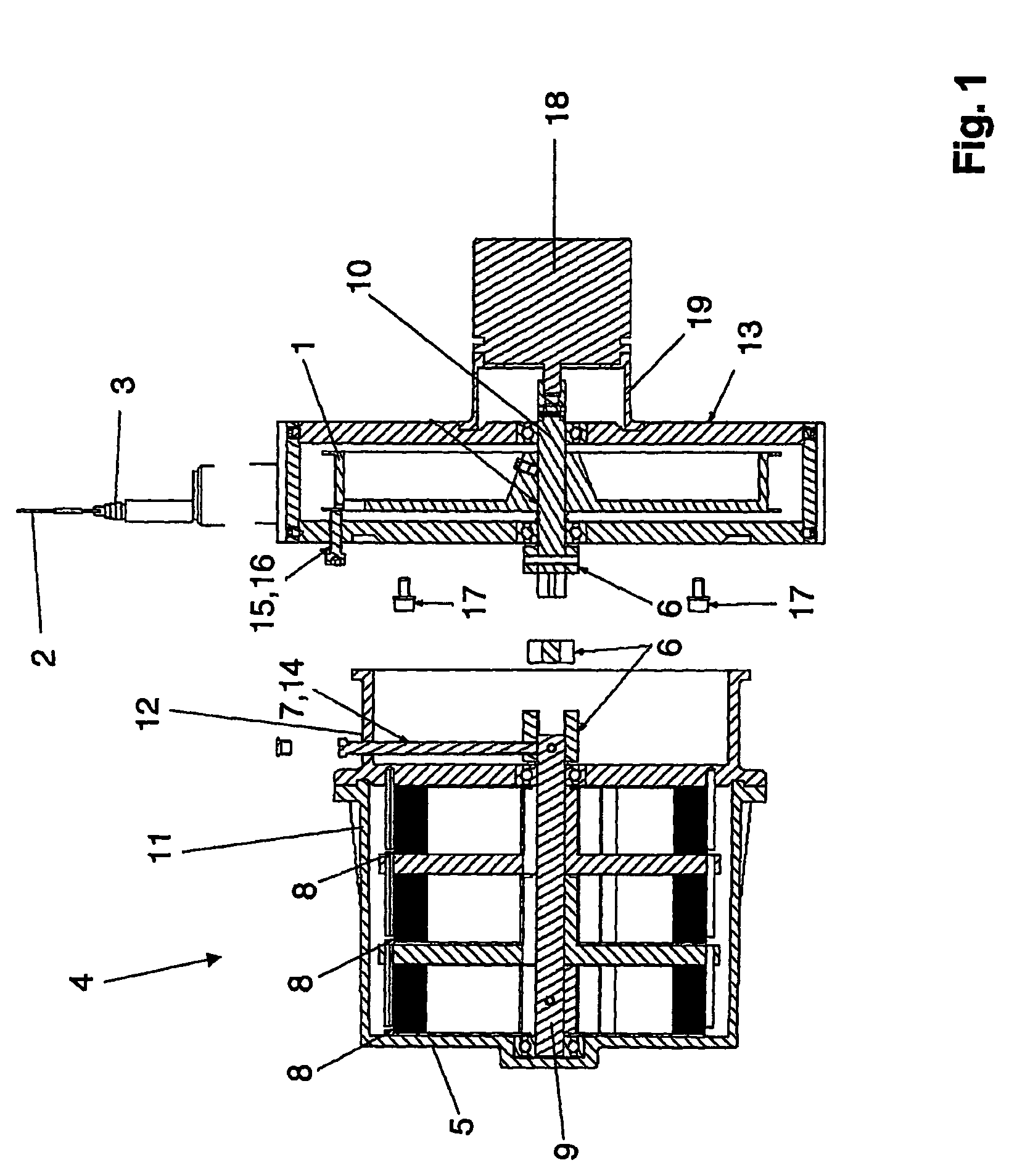Cable length sensor
a technology of cable length and sensor, which is applied in the direction of measuring wheels, hoisting equipment, instruments, etc., can solve the problems of short service life, entail a significant effort, and extremely low service life, and achieve the effect of simple plugging
- Summary
- Abstract
- Description
- Claims
- Application Information
AI Technical Summary
Benefits of technology
Problems solved by technology
Method used
Image
Examples
Embodiment Construction
[0037]FIG. 1 shows an exemplary embodiment of a cable length sensor according to the invention with its essential components. The cable length sensor shown here is a concrete example of a Bowden cable displacement sensor. It comprises a cable drum 1 and a measuring cable 2 wound on the cable drum 1, where the measuring cable 2 is only indicated at the measuring cable output 3.
[0038]The cable length sensor furthermore comprises a return device 4 which is at least slightly pre-tensioned in the starting position, where the measuring cable 2 can be drawn off the cable drum 1, against the force of the return device 4, by turning said cable drum and where the return device 4 is further tensioned by drawing off the measuring cable 2.
[0039]According to the invention the return device 4 is disposed in a housing 5. Furthermore, a coupling means 6 is provided which serves to couple the return device 4 to the turning motion of the cable drum 1. A fixing means 7 serves to fix the current positio...
PUM
 Login to View More
Login to View More Abstract
Description
Claims
Application Information
 Login to View More
Login to View More - R&D
- Intellectual Property
- Life Sciences
- Materials
- Tech Scout
- Unparalleled Data Quality
- Higher Quality Content
- 60% Fewer Hallucinations
Browse by: Latest US Patents, China's latest patents, Technical Efficacy Thesaurus, Application Domain, Technology Topic, Popular Technical Reports.
© 2025 PatSnap. All rights reserved.Legal|Privacy policy|Modern Slavery Act Transparency Statement|Sitemap|About US| Contact US: help@patsnap.com


